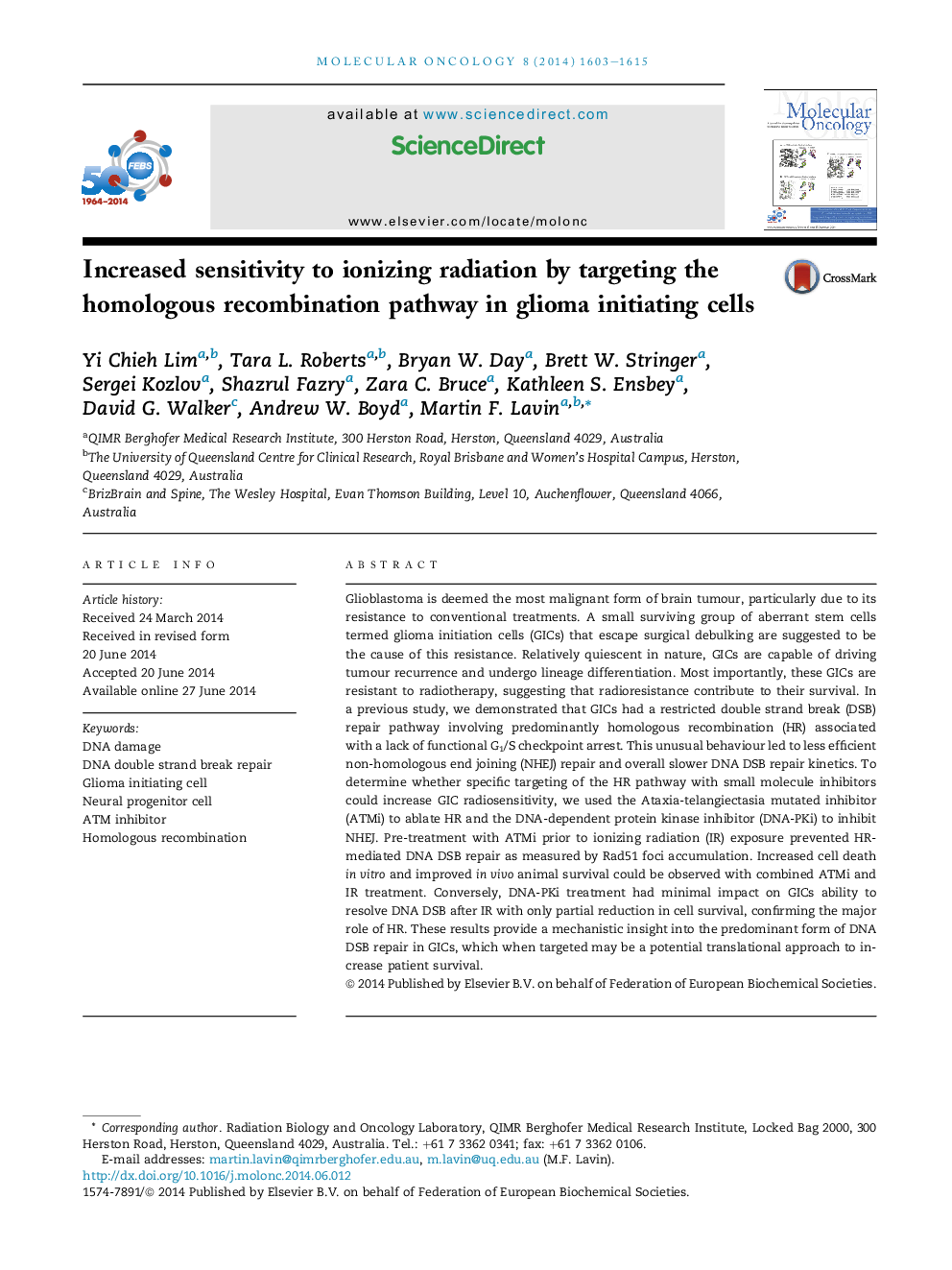| Article ID | Journal | Published Year | Pages | File Type |
|---|---|---|---|---|
| 10914875 | Molecular Oncology | 2014 | 13 Pages |
Abstract
Glioblastoma is deemed the most malignant form of brain tumour, particularly due to its resistance to conventional treatments. A small surviving group of aberrant stem cells termed glioma initiation cells (GICs) that escape surgical debulking are suggested to be the cause of this resistance. Relatively quiescent in nature, GICs are capable of driving tumour recurrence and undergo lineage differentiation. Most importantly, these GICs are resistant to radiotherapy, suggesting that radioresistance contribute to their survival. In a previous study, we demonstrated that GICs had a restricted double strand break (DSB) repair pathway involving predominantly homologous recombination (HR) associated with a lack of functional G1/S checkpoint arrest. This unusual behaviour led to less efficient non-homologous end joining (NHEJ) repair and overall slower DNA DSB repair kinetics. To determine whether specific targeting of the HR pathway with small molecule inhibitors could increase GIC radiosensitivity, we used the Ataxia-telangiectasia mutated inhibitor (ATMi) to ablate HR and the DNA-dependent protein kinase inhibitor (DNA-PKi) to inhibit NHEJ. Pre-treatment with ATMi prior to ionizing radiation (IR) exposure prevented HR-mediated DNA DSB repair as measured by Rad51 foci accumulation. Increased cell death in vitro and improved in vivo animal survival could be observed with combined ATMi and IR treatment. Conversely, DNA-PKi treatment had minimal impact on GICs ability to resolve DNA DSB after IR with only partial reduction in cell survival, confirming the major role of HR. These results provide a mechanistic insight into the predominant form of DNA DSB repair in GICs, which when targeted may be a potential translational approach to increase patient survival.
Related Topics
Life Sciences
Biochemistry, Genetics and Molecular Biology
Cancer Research
Authors
Yi Chieh Lim, Tara L. Roberts, Bryan W. Day, Brett W. Stringer, Sergei Kozlov, Shazrul Fazry, Zara C. Bruce, Kathleen S. Ensbey, David G. Walker, Andrew W. Boyd, Martin F. Lavin,
